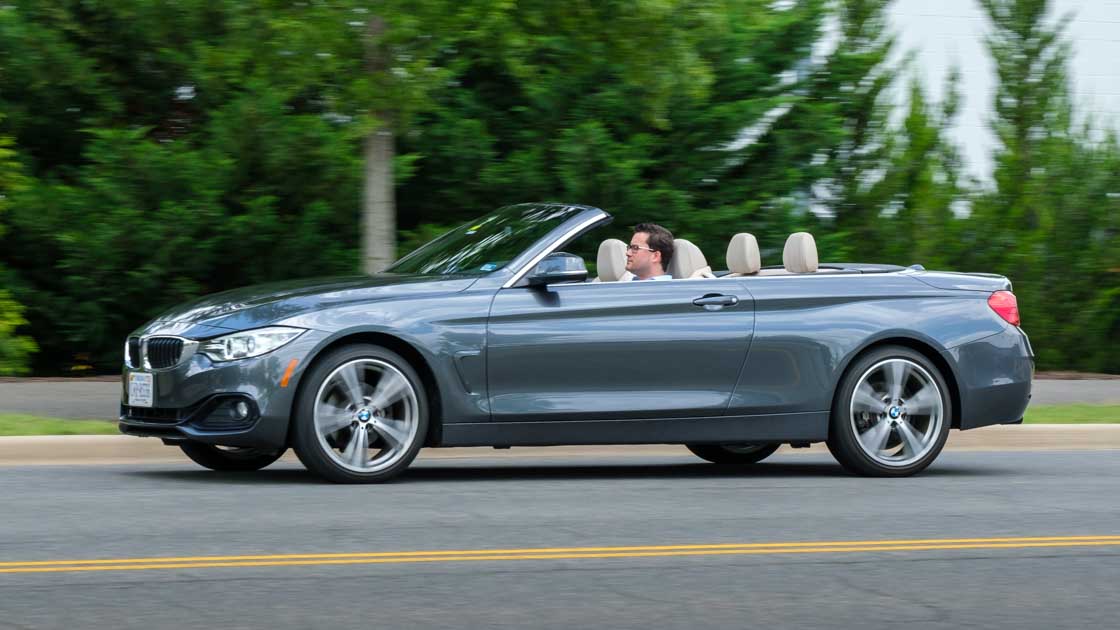Crash statistics show no added risk for convertibles
June 23, 2020

Convertibles may not look as safe as other vehicles when they’re cruising down the highway with the top down, but crash statistics tell a different story, a new IIHS study shows.
Despite the relatively flimsy appearance of their roof structures, late-model convertibles are no riskier than nonconvertibles, according to the analysis of crash and fatality rates.
In fact, both crash rates and driver death rates were lower for convertibles than for nonconvertible versions of the same cars. However, the differences in driver death rates weren’t statistically significant.
“These findings don’t suggest that convertibles offer better protection for their occupants than other cars, but they do indicate there’s no statistical basis for concerns that the lack of a permanent roof makes them more dangerous,” says Eric Teoh, IIHS director of statistical services, who wrote the paper.
Teoh compared the rates of driver deaths and police-reported crashes per mile traveled for convertible and nonconvertible versions of 1-5-year-old models during 2014-18. He also compared the circumstances and driver behaviors associated with the fatal crashes, looking at factors like point of impact and whether the driver was ejected from the vehicle, as well as impairment and seat belt use.
Data on drivers killed in crashes came from the Fatality Analysis Reporting System maintained by the National Highway Traffic Safety Administration (NHTSA). Information about the number of police-reported crashes was from the National Automotive Sampling System General Estimates System and the Crash Report Sampling System that replaced it in 2016, also maintained by NHTSA.
Teoh found that convertibles were involved in 6 percent fewer police-reported crashes per miles traveled than their conventional counterparts. Driver death rates were 11 percent lower. However, the likelihood that the driver was ejected from the vehicle in the event of a fatal crash was higher for convertibles than conventional versions.
Previous research has shown that for conventional cars a stronger roof reduces the risk of a serious or fatal injury as well as the likelihood of ejection in the event of a rollover crash. IIHS added a roof-strength evaluation to its crashworthiness testing program in 2009, making a good rating a requirement for the TOP SAFETY PICK award a year later.
Both stretched-fabric and retractable-hardtop convertibles are exempt from NHTSA’s current roof-crush resistance requirements. However, some manufacturers have voluntarily strengthened the A-pillars on either side of the windshield and installed roll bars to provide additional protection in rollover crashes.
When IIHS evaluated a group of midsize convertibles in 2007, most of the 10 models earned good or acceptable ratings in the front and side crash tests, though eight had poor or marginal head restraints. Since then, convertibles have remained a low priority for the testing program due to their small sales volumes.
This year, the IIHS-affiliated Highway Loss Data Institute also compared insurance claims data for vehicles available in both convertible and nonconvertible versions, finding that the convertibles had lower injury rates and collision claim rates.
Teoh found little difference in most of the circumstances of the fatal crashes for convertible and nonconvertible vehicles. In both cases, around a quarter of the fatalities occurred in rollover crashes, about half occurred in single-vehicle crashes, roughly 60 percent resulted from front-impact crashes, and about 20 percent from side-impact crashes.
However, 21 percent of the convertible drivers killed in crashes were ejected from the vehicle, compared with 17 percent for conventional cars. Among rollover crashes, the likelihood of ejection was 43 percent for convertibles versus 35 percent for their nonconvertible counterparts.
Convertible drivers were slightly more likely to be wearing seat belts and slightly less likely to be speeding, though they were a bit more likely to be impaired by alcohol. These differences were too small to suggest a big variation in driver behavior for the two vehicle types.
Teoh wasn’t able to account for all possible differences in the way convertibles are driven, even when comparing with the nonconvertible version of the same car. For example, it may be that convertible owners more often drive them in nice weather or on less busy roads, and that could affect crash rates.
“Based on this study, convertibles don’t appear to pose a particular safety risk,” Teoh said. “If you’re shopping for a convertible, you should consider crash test ratings and safety features, just as you would if you were shopping for any other car.”